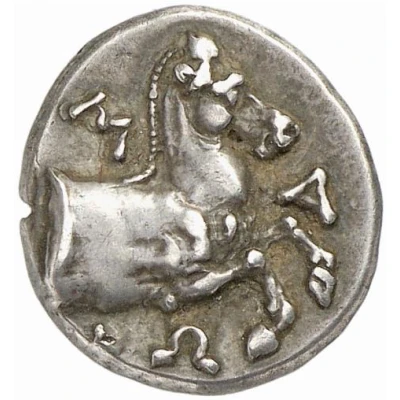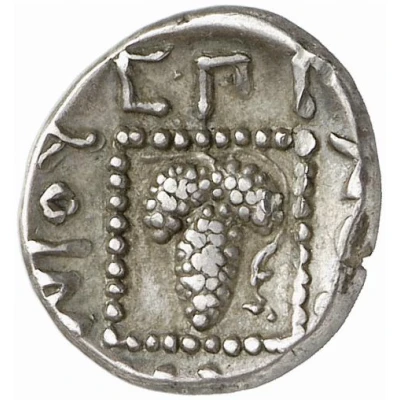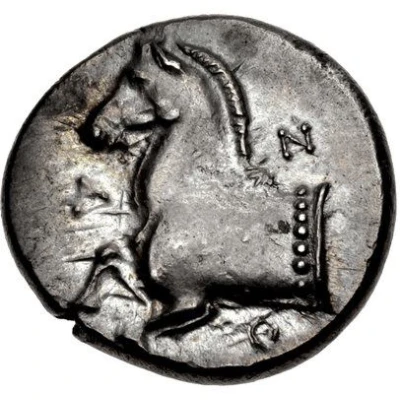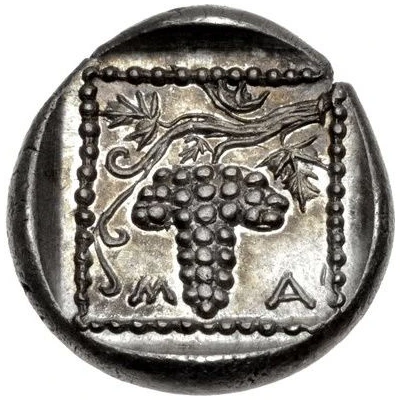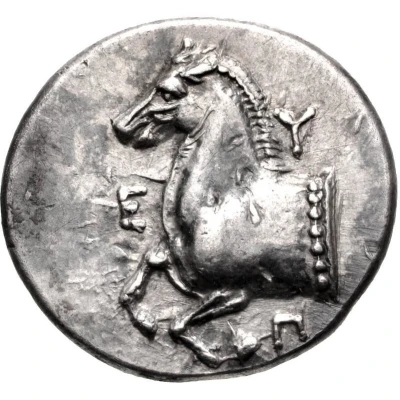
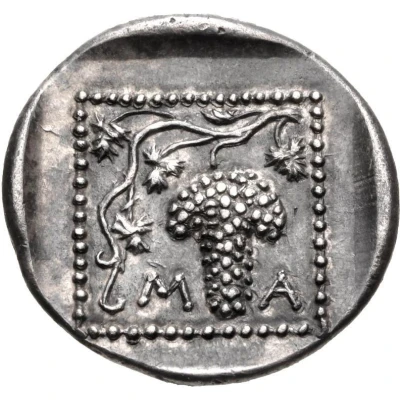

© Classical Numismatic Group, Inc.
Triobol 377 BC - 365 BC
| Silver | 2.79 g | 16.5 mm |
| Issuer | Maroneia (Thrace) |
|---|---|
| Type | Standard circulation coin |
| Years | 377 BC - 365 BC |
| Value | Triobol (½) |
| Currency | Drachm |
| Composition | Silver |
| Weight | 2.79 g |
| Diameter | 16.5 mm |
| Shape | Round (irregular) |
| Technique | Hammered, Incuse |
| Orientation | Variable alignment ↺ |
| Demonetized | Yes |
| Updated | 2024-10-10 |
| Numista | N#430351 |
|---|---|
| Rarity index | 100% |
Reverse
Grape bunch on vine within dotted linear square; all within shallow incuse square.
Script: Greek
Lettering: Μ Α
Interesting fact
The Triobol coin was used as a form of currency in ancient Greece, specifically in the city of Maroneia (Thrace) during the 4th century BC. The coin's name "Triobol" comes from the Greek word "triobolos," which means "three-piece." This name refers to the fact that the coin was made up of three separate pieces: two outer pieces and one inner piece. The outer pieces were made of silver, while the inner piece was made of a copper-like metal. This unique design made the Triobol coin easily distinguishable from other coins in circulation at the time.
Price
| Date | Mintage | VG | F | VF | XF | AU | UNC |
|---|---|---|---|---|---|---|---|
| ND (377 BC - 365 BC) | - | - | - | - | - | - |
Values in the table are based on evaluations by sales realized on Internet platforms. They serve as an indication only for Triobol (377 BC - 365 BC) coin.
